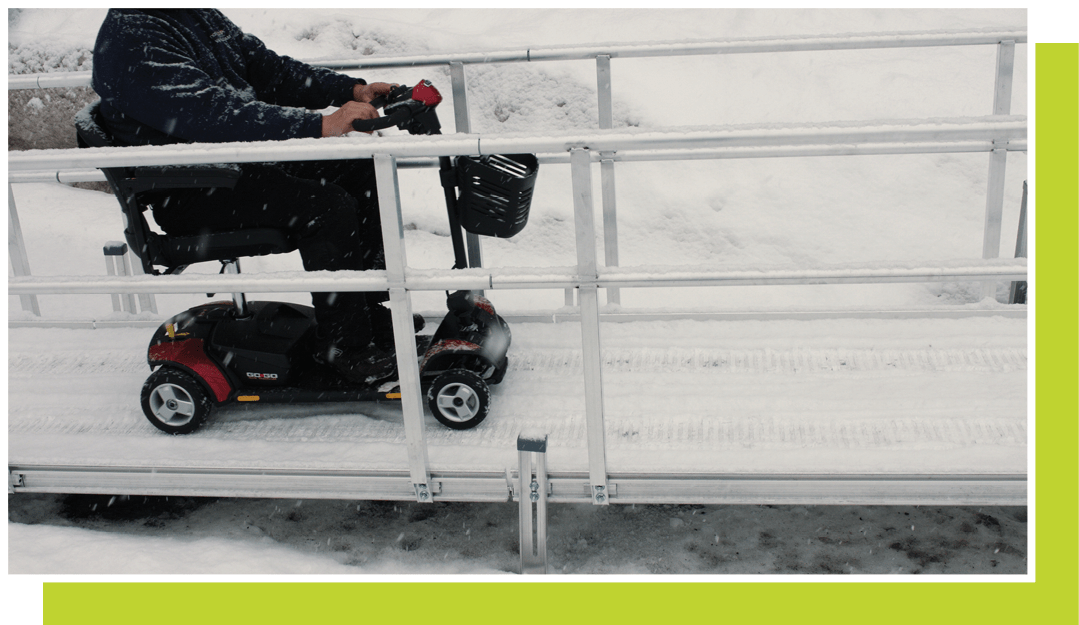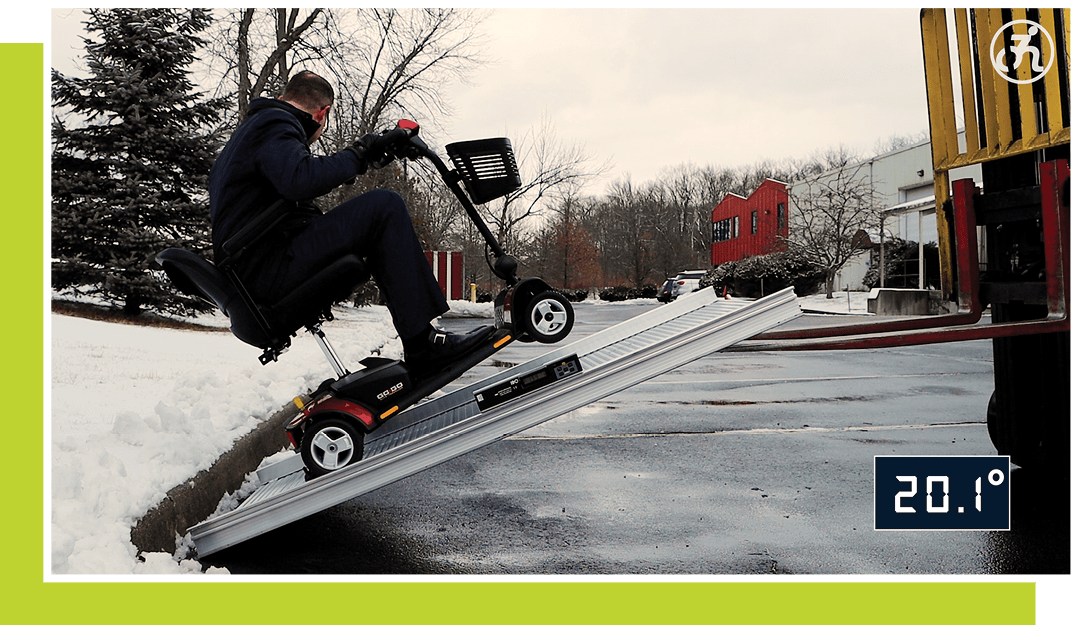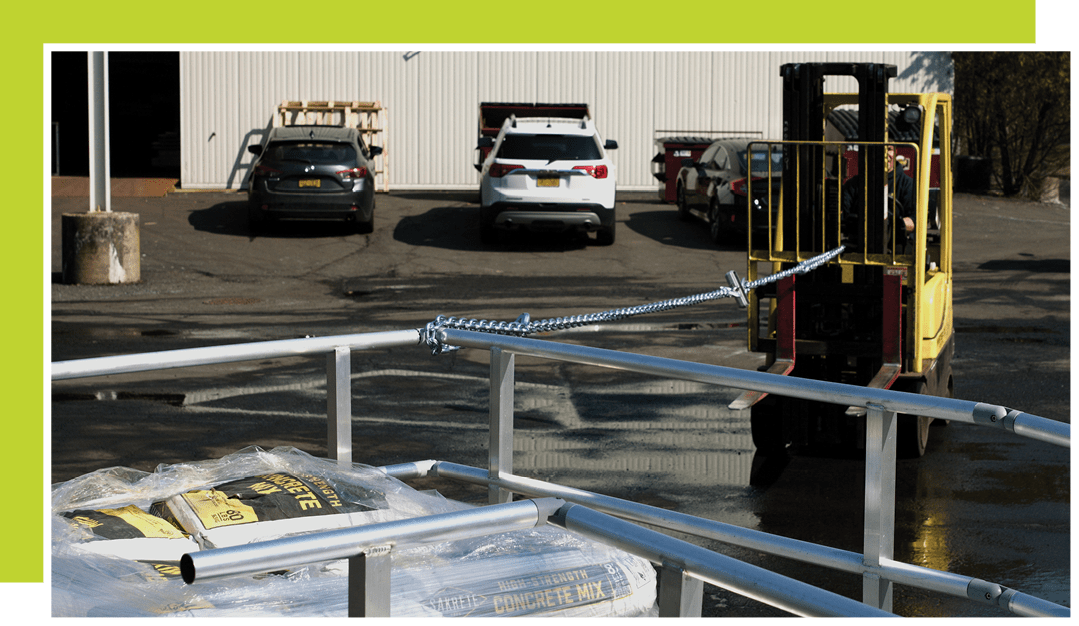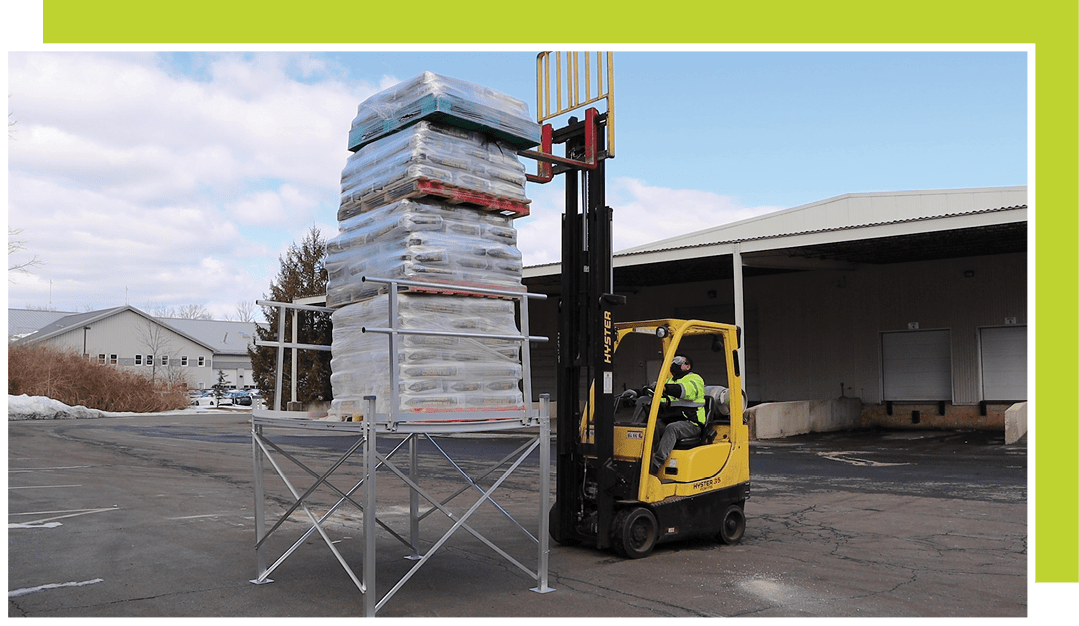Ramp Features
Our ramps offer a variety of safety features, from weight capacity to handrail strength and non-slip traction. While we know what the engineers said, we needed to see for ourselves just what our ramps could handle. Plus, we believe in our ramps so much that we had to put them to the test.
 Fire Resistance
Fire Resistance
In a house fire, every minute matters. According to the National Safety Council, once a smoke alarm alerts you to a fire, you only have a minute or two to safely escape.
At a fire testing facility, we connected the ramp to wooden pallets which were then lit on fire, reaching temperatures over 1500°. The ramp sustained the heat of the fire for more than 15 minutes from the time of fire ignition, which is ample time to get you out of your home.
This test subjected the ramp to a much higher direct flame than an average house fire condition. This extreme example shows that a ramp would easily sustain the residual heat that most ramps would be faced with, and that so long as you can get out of your house and onto the ramp, the ramp will bring you to safety.
 Traction
Traction
Winter weather is unpredictable across the country, so you need to be confident that your ramp will hold up to whatever precipitation is thrown your way. We put our Liberty Series™ to the test to see how well the traction would hold up in the snow.
The power scooter was able to keep its grip on the extruded aluminum treads of the ramp surface. Slow and steady, safely up the ramp!
While you can have peace of mind that your ramp will keep its traction, we still advise extreme caution during slick weather and strongly recommend that the ramp be swept clean before use.
 Slope
Slope
The Americans with Disabilities Act (ADA) guidelines call for a 1:12 slope (for every inch of elevation, you need 12 inches of ramping), which is a 4.8° angle. However, the ADA does not govern residential ramps, and some mobility devices are rated up to 10°. We wanted to see just how steep our ramp could go before a scooter started to slide. And we picked a day that it was snowing, just to make it a bit more interesting!
Our volunteer for this experiment was our company’s president, Garth Walker. We increased the slope of the ramp to a stunning 20° before the scooter tipped back.
If your space requirements and mobility device will allow for a ramp shorter than 1:12, the Liberty Series™ can still support you.
 Strength of Elbows
Strength of Elbows
We set out to see how many pounds of pressure our newly designed locking elbow could withstand before coming loose.
Keeping the ramp in place with 2,000 lbs. of concrete, we connected a chain from the elbow to a forklift and pulled it until it slipped out of place. Our crane scale registered 451 lbs. of pressure before the elbow finally gave way.
 Weight
Weight
The Liberty platform has a weight capacity of 1,200 lbs., but we wanted to see how much we could pile on before the ramp failed. And not just a platform near the ground, we put ours 4ft in the air.
We installed the ramp according to our installation instructions, including locking driller screws and cross-bracing to match the security features of ramps installed at a customer’s home.
The platform supported 2,000 lbs., nearly twice the capacity, with no problem.
It held 4,000 lbs. without breaking, but the damage was done, as the platform was stretched beyond the allowable point of metal flex. But even bending from the weight, the platform was still standing, surpassing even our expectations, and sending us back to the hardware store for more concrete! We were on a mission to crush it!
With every pallet of concrete we stacked onto the platform, we were on the watch for signs that the platform would give way. Despite our attempts and calculations, it held an astonishing five tons of concrete (10,000 lbs.) and was still standing. Tired and with a lot of concrete on our hands, we called it a day. Rest assured that the Liberty™ can handle the normal stress that most users will need for safe travel. If there are specific concerns about your situation, speak with your dealer about our other ramp solutions.
 Strength of Handrails & Side Impact Test
Strength of Handrails & Side Impact Test
Unfortunately, people can sometimes lose their footing or steer their power chair into a handrail. We want to know that our handrails will help prevent accidents. We stacked 1,600 lbs. of concrete along the ramp’s travel surface to act as an anchor to keep the pressure from the forklift focused on the handrails.
ADA specifications require ramp handrails to withstand 200 lbs. of side force. In our test, the forklift pulled the equivalent of 582 pounds of pressure before the railings sheared off our universal brackets.
Everyday use of our handrails can stand up to the test of time.
As you can see, our Liberty Series™ ramp can outperform its own ratings. While the ramps are not indestructible, our ramps can withstand the normal use that someone will subject it to, and maybe a little more.
We designed the ramp to provide safety and peace of mind, so please always do your part in exercising caution when on the ramp.
Fill In This Form And Download Our Ramp Features Brochure Now!





